- Home
- Timothy Egan
Lasso the Wind: Away to the New West Page 5
Lasso the Wind: Away to the New West Read online
Page 5
More than a century ago, when only a handful of bison were left on the open range, the Lakota Sioux broke into a Ghost Dance in winter, hoping that the power of their ritual would vanquish the soldiers, bring back the animals, raise Indian warriors from their graves. It ended in the last, awful spasm of violence in the conquest of the West, the rout at Wounded Knee. As cattle barons replaced people who lived off the natural bounty, so now the bison rancher with one foot in the new century is replacing the cowboy, and the once nearly extinct wild animals are being allowed to come home. Every cycle produces new victors and new victims. The constant is the government—always the target. They wrote and broke treaties with virtually every native group in the West. They dammed the great rivers, paid bounty hunters to kill much of the wildlife, and auctioned off the forests. Now, as they try to make amends, they wonder why nobody trusts them. In years to come, Leopold’s legacy will be appreciated, and Smokey will have little to fear. But in the meantime, the last skirmishes of the old wars go on, in the hidden folds of the land. Laney’s defiance is a kind of ghost dance. If only, he seems to think, he just ignores it all—the Forest Service, Ted Turner and his goddamn buffalo, the crash of beef prices—then the West of the 1880s can return. Even though nobody needs his beef, enough people seem to need the idea of Kit Laney, the Last Cowboy in America. So he stays put, boot heels in the ground, hiding in the woods of custom and culture.
CHAPTER 2
Plymouth Rock West
Acoma, New Mexico
You stand at the lip of a cinnamon-colored ledge, four and a half centuries after the same ground rattled with Francisco Vásques de Coronado’s column, and see nothing that could lure an army up the spine of the continent. From five miles out, you can see homes, terraced and weathered, facing south. It bears some resemblance to the pictures in yellowed books, pictures that go back a hundred years or more, labeling this view, these homes, as the ruins of Acoma. Some maps, sadly misled, contain the same caption. You rub your eyes at the spot where Spanish hearts sank and see a place pulsing with life. The ruins are alive. Nothing extraordinary appears to be going on, just the routine of a day. You are close enough to see that the pueblo is made of beige New Mexican mud, not gold, and so you can hear with minimal effort the sigh of the conquistadors, the empty wind blowing their Latin banners, which proclaimed Plus Ultra—More Beyond.
The way to counter the Western malaise of drift and rootlessness, says the poet Gary Snyder, is to find your place, dig in, and defend it. And so here is Acoma, possibly the oldest continuously inhabited city in the United States, living by the poet’s dictum. The Sky City is nearly seven thousand feet above sea level, burnished today by the low-angled sunlight of late winter. It is built on the crown of a sandstone butte that soars from a table four hundred feet below. In the usual tellings of the national story, Acoma is an asterisk. It deserves better, if for no other reason than because people have lived atop the same wind-scoured rock for perhaps a thousand years or more, and from that perch fought the first battle over religious freedom in what is now the United States.
The story of America usually starts in the East, with Pilgrims in New England and tobacco farmers in Virginia, finally making its way toward the sunset for barely a generations worth of gunfighting and gold-digging, using a clocks tick of history, roughly 1849 to 1890, to define the West. The well-worn narrative, not unlike many modern Western politicians, is heavily influenced by the movement and slaughter of domestic cattle and grubstaking for off-colored rocks—a pitiful excuse for a history. The Spanish drove a herd of cattle across the Rio Grande 350 years before the streets of Laredo were knee-deep in cow shit. But nobody comes West today in search of ancient steak bones. They come to see why a place like Acoma is still standing.
Acoma is where one nation’s motto of More Beyond met another’s End of the Line. Plymouth Rock Pilgrims were yet to be born, nor had the first draft of the Jamestown narrative been sketched when a dust cloud carrying bearded men on horses arrived at the foot of Acoma in 1540. Loaded for geld and costumed for war, the Spanish were chasing an eight-hundred-year-old rumor: the gilded cities of Nuevo Mexico. Three hundred soldiers, trailed by Franciscan friars, long-conquered Aztecs, and brass cannons on wheels, had traveled north by foot and hoof more than a thousand miles, living largely on a diet of anticipation. They would gaze into the Grand Canyon, drink snowmelt from two-mile-high peaks rising from the whiskered face of the Sonoran Desert, chase bison on the Great Plains, and plod through city after city of people who knew how to live a reasonable life in a land without reliable rain. The vistas stretched to earthly infinity under a sky that made people feel insignificant. The Spanish understood north from south and east from west, but what they found most troubling were the two other dimensions of the Acoman compass—up and down, the directions in eternity.
The first residents of Acoma, descendants of the Anasazi, had also wandered, abandoning their hundred-unit apartments on the Colorado Plateau. They buttoned up the carefully masoned homes, walked away from the maze of funnels and diversions used to channel water onto farm fields, and headed south. Over the years, they strayed down one withered wash or another, shouting into the sandstone walls, waiting for the echo that would tell them they had arrived at their long-prophesied new home. West of the Rio Grande, within view of the white-haired summit of an eleven-thousand-foot-high mountain, the shouts were returned. The echo epic was over. Here, atop the rock, on the flat, thin-soiled, unwatered high point, they founded Acoma, a Keresan word meaning the Place That Always Was. More Beyond? No, Senor Coronado. This is it.
YOU FEEL like a stranger here, not unwelcome, but uncertain. From the road heading west out of Albuquerque, you see nothing to entice you on a detour to the Sky City. There is a casino near the exit. The real payoff is ahead, down a winding road through modest homes, past a few vacant-eyed mules rubbing against barbed-wire fences, to the ledge that looks out to the initial views of Acoma. No pictures are allowed, even from afar, without permission. The Acomans want to control what they can of their image, their story. You think what a corporate cowboy publicist could do with this material, angling for subsidies in the name of tradition.
Down in the valley, closer to the pedestal of Acoma, is a flat plain sliced by an ancient road. At Christmastime it is lined with candles, a luminaria, all lights leading to the top. Now, at road’s end, you either move up by foot or out by car. As in Coronado’s day, an escort to the pueblo in the sky is required. You ascend.
In 1540, Coronado’s men followed the same route, crawling up the rock, guided by handholds in the stone worn by the fingers of many generations. Pushed by the fading promise of Plus Ultra, the conquistadors scaled the flank with swords clanking at their sides. “The ascent was so difficult that we repented climbing to the top,” Captain Hernando de Alvarado wrote. They would come to repent many things in the Land of Disenchantment.
THE PEOPLE who live at Acoma say their ancestors first came to the rock about A.D. 800, though most archaeologists date the point of habitation at about 1150. The more compelling fact is that they never left. “From the beginning of time we have been told there was such a place,” says Mary Tenorio, an Acoma native, who lives down below on the flat land. “So this is as far as we can ever go.”
You mention the bones found on a bank in the Columbia River not long ago, the remains of a man about five feet nine inches tall, a man who by the reading of radiocarbon datings lived nine thousand years ago. You don’t want to argue with Mary Tenorio, an artist, standing with you in the blood-slowing wind of a winter day, at the base of the Place That Always Was. The facial bones of the Columbia River man do not match the features of any other native people in the Americas. He appears to be of northern European stock, the anthropologists say. A white guy. You are not disputing the prophecy of Acoma, but simply wondering why some people stayed around and some did not, whether some people followed prophetic destinies and some did not. Maybe the Anglos from the Columbia Plateau simply died out befo
re they could find a Place That Always Was. Maybe that will be the problem Phoenix will face.
Five hundred years ago, the entire Rio Grande pueblo community was more densely populated, in places, than it is today. The inhabitants lived in tight little communities, entirely surrounded, they believed then as now, by envy. There were about 60,000 people in the broad valley at the time of Coronado’s arrival.
Along the ledge today, you can hear long-ago voices in Spanish and Keresan, dimming the fires of Coronado’s imagination. You can imagine the look the conquistador gave his scout, as he checked his map, his eyesight. What the hell is this?
“The greatest stronghold ever seen in the world,” one of Coronado’s men wrote.
The curse of Coronado was what had come before him, the big shadow of expectations. He was thirty years old, an aristocrat, full of himself as only someone chosen for greatness by church and state can be. In the parlance of modern politics, he did worse than expected. His chief guides were pathological prevaricators. His financial supporters, the Spanish Crown and noblemen who had sold their homes to bankroll the next great treasure hunt, expected a tenfold return and enough adventure stories on which to dine into their dying years.
Barely twenty years earlier, Hernando Cortés had landed on the coast of Mexico and marched a path to the peak of Spanish glory. So confident was Cortés of Plus Ultra that his men burned their boats near Vera Cruz. Inland, after hacking through the Mexican rain forest and stumbling upon a golden valley, they found Tenochtitlán, the Aztec capital. With its floating gardens, canals, and massive pyramids, it was as grand as any city of sixteenth-century Europe, but also much larger—with a population of nearly a quarter million. Jewels were cheap, gold ubiquitous, food plentiful. The Aztec pact with the sun gods required a mere human heart—freshly cut and live—a day. Without this daily sacrifice, the sun would fall out of the sky forever.
Through dealmaking with native factions, superior weaponry, and the silent front flank of disease, Cortés gradually broke the Aztecs. Spain had its gravy train of gold to fortify its armies for another century of European wars.
“We have a strange disease of the heart,” Cortés told the Aztec emperor Montezuma, “for which gold is the the only cure.”
So what to make of Acoma, all mud walls and squawking turkeys, the people plain and squat, the ordinary lives of ordinary people a joke compared with Tenochtitlán? This Nuevo Mexico high country was supposed to be the heart of the Seven Cities of Cibola. The conquistadors went to bed every night on tales of the cities, said to have been founded by seven bishops who had fled the Moorish occupation of Spain hundreds of years before. And more recently, there had been all these encouraging reports, the advance word. After a disastrous landing in Florida, a little knot of lost Spaniards and a Moorish slave had straggled west across the continent, over eight years, through Texas and New Mexico, finally arriving in Mexico City, the headquarters of New Spain. They built a bonfire of lies, leaping details of the Seven Cities of Cibola, places where doors were trimmed in turquoise and stairways lined in gold. Somewhere in Nuevo Mexico. Somewhere in the Rio Grande Valley. Somewhere in El Norte. You had to squint, at first, but it was there. Once the Pueblo people saw how hungry the Spanish were for nuggets of Cibola information, they too started spreading rumors— basically as a way to send them on to the next village. Just over the rise, Señor Coronado.
Coronado traveled four thousand miles in all. He was a truly atrocious guest, arriving at one Pueblo village or another to consume most of their winter food supplies, trash their homes, mock their religion, and paw at their women. He burned at least one hundred warriors at the stake. Pinyon smoke never smelled so bitter. The Zuni pueblo of Hawikuh was described by one of the conquistadors as “a little crowded village that looks as if it had been all crumpled together.” And Hawikuh was a Cibola highlight, one of the places where the streets were supposed to be cobbled in gold.
In truth, the villages were no better or worse than the basic western farm town of modern America. Each had anywhere from four hundred to two thousand people. They kept domesticated birds and raised corn, squash, and beans in irrigated fields. The food wasn’t bad. “They make the best tortillas that I have seen anywhere,” wrote Pedro de Castañeda, the first journalist of the West, who went along with Coronado, keeping a chronicle. Hired as a propagandist, he became disenchanted, ultimately siding with the natives. The Indians were good masons, good potters, and good clothiers, making colored outfits from the cotton they grew. They had never seen a horse. As for precious metals, the closest thing they had was turquoise, but certainly nothing to set a conquistador’s pulse racing.
The first encounter between Europeans and natives in the West was violent. A battle with the Zunis knocked Coronado unconscious and made him thoroughly ill-tempered afterward. He was hit on the head by a rock thrown from a Zuni post. In all, he destroyed a dozen pueblos, breaking a promise he had made to the viceroy of New Spain that any conquest would be “Christian and apostolic, and not a butchery.”
His low point may have been on the plains of Kansas, at the far eastern edge of the rumor-chase. When he found grass huts and animal-skin lean-tos instead of the gilded city of Quivera, Coronado garroted his guide, the latest in a string of artful liars. Quivera, the conquistadors had been told, was a city where the emperor took his afternoon nap under a tree bedecked with bells of gold, lulled to sleep by the wind against the ornaments. That story sustained them on the march to Kansas, but the way home had no similar motivating myth. Retreating back to the Rio Grande, Coronado said of the Great Plains and its bison herds, “It is nothing but cows and sky.”
Nearing the top of Acoma, Coronado’s men must have felt like a party that climbs Mount Everest only to find someone lounging on the summit with a bag of chips and a portable TV. They were shown kivas, the ceremonial cellars, and the elaborate village, windows facing the southern sun, cisterns filled with drinking water, pathways on the hard stone, hundreds of people going about their business atop the rock of Acoma. Women climbed up the ladders, water-filled pots balanced atop their heads, without spilling a drop. The villagers said their perch was impenetrable: nobody would ever take the fortress Acoma. And Coronado’s men wondered, clambering back down the rock, Who would want it?
THE FIVE HUNDRED or so homes atop Acoma are still heated by wood, with mounded clay ovens outside that look like big beehives. The old timbered ladders, baked white by the sun, still rise to the top terraces, and there are deep footpaths along the tabletop of the rock. It is not a museum, but a living town, somewhat iced in time. The wind dominates all other sounds.
The Acoma people always had a cacique, the top religious head of the pueblo. His job was to watch the sun, keeping careful track of its movement so that the people would not miss the solstices. This did not impress the Spanish, who had their own fetishists but seemed well assured that the sun would rise every day, regardless of whether they paid any attention to it or not. Also, in this land where the dry air was full of illusion, Pedro de Castaneda had written, “What they worship most is water.”
Signs of the ancient religion abound atop the pueblo, but the tallest, most dominant structure has nothing to do with sun worship or water shortages. As you move through the village, hearing half-stories of wars and miracles at Acoma, of the silver-crowned cane that was a personal gift from Abraham Lincoln for loyalty to the Union, of priests being thrown from the cliff, and defeat and redemption of the residents, you wonder about the church bell hanging above the Sky City, in San Esteban de Rey Mission. It seems so out of place. Coronado, the deflated conquistador, fled the rock, claiming no use for Acoma. The Spanish had come to New Mexico, one conquistador wrote, “to give light to those who were in darkness and to get rich as all men desire to do.” The Acomans did not seem worth the effort of conversion, and they certainly had little that would fill the crowns coffers. Coronado went back to Mexico City in disgrace, later to be tried for mismanagement and cruelty to the Indians. But the S
panish were not done with Acoma.
OLD AGE was to the sixteenth century what drawn-out male adolescence is to the late twentieth century. You married as a teen, mourned the death of many of your children during the first few years of their lives, and counted yourself lucky if you lived past your thirty-fifth birthday—five years beyond life expectancy for European males. Don Juan de Oñate was nearly fifty years old, a fossil in armor and silk, when he finally pushed north out of Mexico City on a colonizing journey to the Kingdom of New Mexico in 1598. It was the same year that Cervantes started writing Don Quixote, so windmill-chasing was not yet ingrained into Spanish life as a national metaphor.
After years of delays and debate, Oñate had persuaded the Crown that it was worth taking another look at the cold, high mesas of the north. More than half a century had passed since Coronado’s disaster. The soul-saving argument carried much sway, of course. But there were other incentives to prod the two-mile-long column that moved through the dust of El Camino Real—the two-thousand-mile trail from Mexico City that for centuries was the longest road in North America. The Spanish, like other Europeans, were still in ardent pursuit of a waterway across North America, the fabled shortcut to Asia. The ill-fated march of Coronado had not chilled the urge for chasing rumors; the Northwest Passage, known to the Spanish as the Strait of Anian, would be a wondrous trophy. Maps of the time also showed a distant and vast island named California, somewhere off the coast of present-day Nevada.
Gold lust had not dissipated. The Spanish Crown was bankrupt, having frittered away its huge profits from New World mines on endless meddling in European wars. Maybe, some of Oñates men told themselves, Coronado had missed something. A snowballing rumor had it that there were silver bars just lying around the ground of the Rio Grande pueblos. As a sweetener, Oñate offered prospective settlers prime New Mexican real estate, for the taking, and a low-level noble title. Essentially, it was the first American dream, conquistador version. Every man who lived in New Mexico for five years would receive a patent of hidalgo, the lowest rank of Spanish nobility.

 The Immortal Irishman
The Immortal Irishman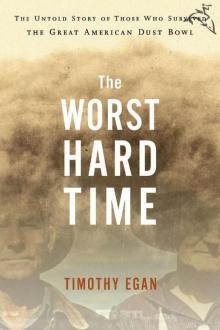 The Worst Hard Time: The Untold Story of Those Who Survived the Great American Dust Bowl
The Worst Hard Time: The Untold Story of Those Who Survived the Great American Dust Bowl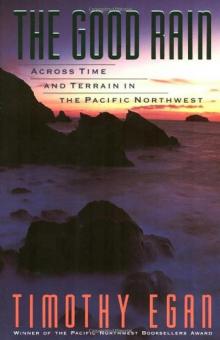 The Good Rain: Across Time & Terrain in the Pacific Northwest
The Good Rain: Across Time & Terrain in the Pacific Northwest Breaking Blue
Breaking Blue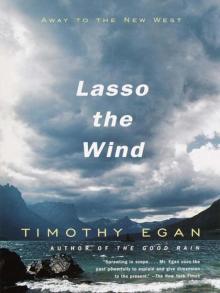 Lasso the Wind: Away to the New West
Lasso the Wind: Away to the New West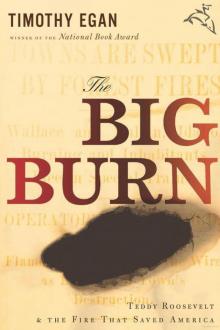 The Big Burn: Teddy Roosevelt and the Fire That Saved America
The Big Burn: Teddy Roosevelt and the Fire That Saved America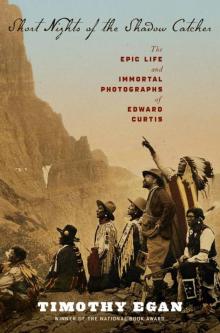 Short Nights of the Shadow Catcher
Short Nights of the Shadow Catcher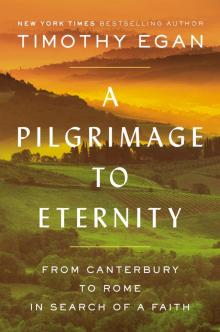 A Pilgrimage to Eternity
A Pilgrimage to Eternity The Worst Hard Time
The Worst Hard Time The Big Burn
The Big Burn